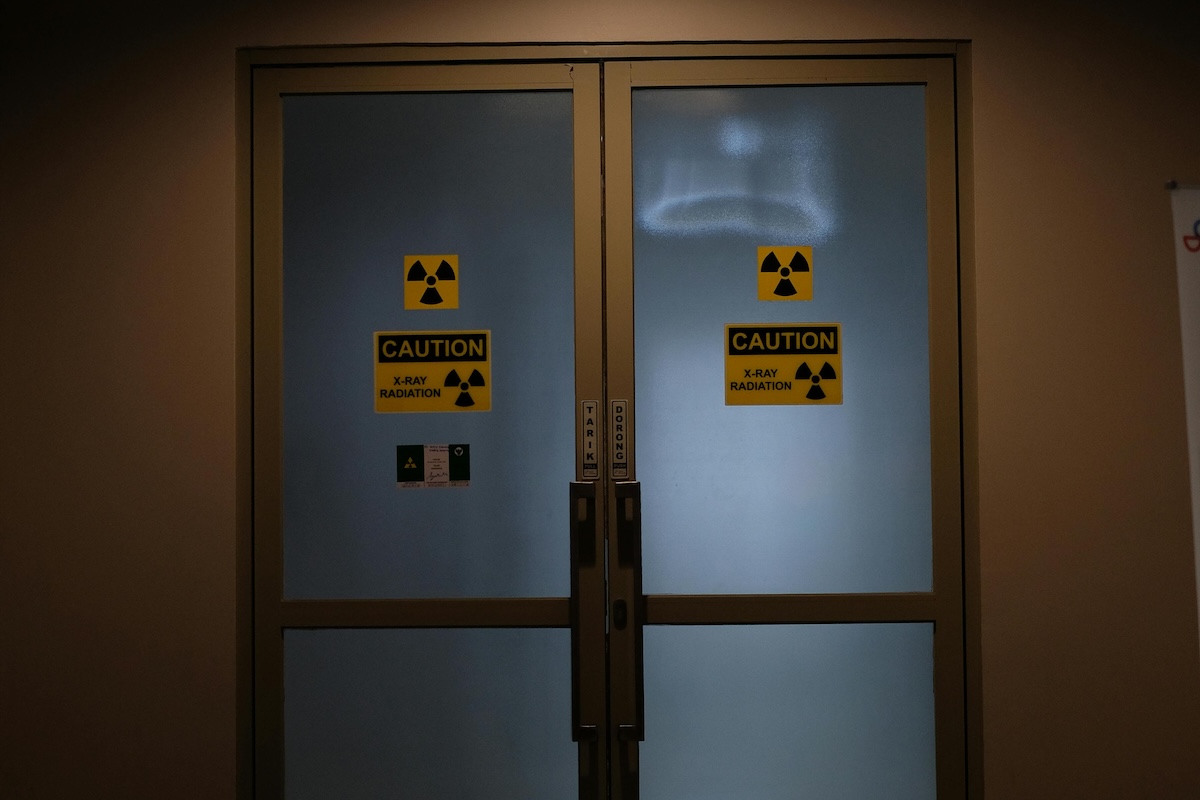Why the Harmonized System is Not Just About Customs Duties Anymore

Article Summary
The Harmonized System (HS) is an internationally standardized system for classifying traded goods, managed by the World Customs Organization (WCO).
The HS now addresses global issues like environmental sustainability, crisis management, data analytics, and the circular economy.
The HS helps regulate trade in environmentally sensitive goods, such as hazardous waste, e-waste, and ozone-depleting substances.
The HS facilitates the rapid movement of critical goods during crises, such as medical supplies during the COVID-19 pandemic.
The HS enables customs authorities to share and analyze trade data, improving enforcement and targeting of illicit goods.
The HS faces challenges in classifying circular economy goods, requiring updates to better track recycled, refurbished, or reused products.
Customs compliance professionals must understand and prepare for new applications of the Harmonized System (HS) to ensure they are prepared to address emerging supply chain challenges while complying with applicable laws and regulations. We explore four ways that the HS has expanded beyond traditional customs issues into other policy areas. Given the more complex intersection between trade operations and expanded trade policy issues, maintaining compliance will require greater coordination across corporate disciplines.
1.) HS initiatives to support climate change and environmental sustainability
There is a growing acknowledgment by governments and businesses that cross-border trade impacts global environmental problems. This creates a need to measure and monitor trade in specific products that have an environment impact, whether positive or adverse.
Under various Multilateral Environmental Agreements (MEAs)1, Customs administrations are working to support environmental sustainability and help address climate change by regulating trade in environmentally sensitive commodities. Their objectives include addressing illicit trade in hazardous waste, combating illegal trade in endangered species, and preventing the spread of plant and animal diseases, as well as of invasive animal and plant species.
Some recent examples include:
- Environmentally sensitive products: Hazardous chemicals and mixtures of goods that contain substances that deplete the ozone layer are frequently illegally imported despite prevailing laws. HS 2022 amended the nomenclature to add specific HS classifications to assist Customs authorities with their identification at borders.
- Plastic and e-waste2: Around the world, there is increased pressure to reduce illegal shipments of waste, including plastic and e-waste. Customs administrations are working to find solutions that ensure new export controls on waste are in place and waste imports are compliant. HS 2022 includes provisions for separate classification of e-waste at the global HS level. As countries implement HS 2022, these new codes will enhance transparency in legal cross-border trade of e-waste. The broader issue of how the HS can address plastic waste management is being considered by World Customs Organization (WCO) members as they develop the 2027 edition of the HS.
2.) HS initiatives to facilitate more effective global crisis management
The COVID pandemic demonstrated that when a global crisis occurs, management of cross-border trade for humanitarian shipments containing highly regulated items — such as medication, medical equipment, food products, vehicles, and telecommunications gear — is complicated by the urgent need to speed these essential imports into impacted areas. The pandemic also demonstrated the need for the HS to support customs authorities’ dual ability to rapidly process shipments and maintain controls on safety standards addressing the quality and authenticity of goods.
The International Convention on the Simplification and Harmonization of Customs Procedures (known as the Revised Kyoto Convention (RKC)) establishes standards for simple, yet efficient customs procedures to address supply chain issues and facilitate relief shipments including for essential medical equipment such as COVID-19 tests, vaccines, masks, gloves, and respirators.
The RKC was a key resource that countries applied to ensure barriers to essential COVID-19 related goods were minimized and imports expedited, such as temporary lifting of export restrictions, removal of regulatory barriers and elimination of import tariffs. Based on the lessons of the pandemic, this approach is being considered by governments and international organizations to address other types of health-, environmental- and conflict-related supply chain issues. Manufacturers, suppliers, and importers need to understand how they could be impacted by future “critical goods” HS lists.
3.) The HS and rise of data analytics
Comprehensive data analysis and targeting based on the HS is considered a key component in effective and efficient customs enforcement. The WCO encourages sharing of HS data between Customs authorities to analyze trends and patterns and make informed decisions to manage cross-border trade under their jurisdiction.
During the COVID 19-pandemic, the WCO launched an initiative called “Operation STOP” to protect the public against counterfeit and illicit medicines and other medical supplies and equipment3. Nearly 100 WCO Members participated in sharing information and data analytics. Members developed an indicative list of targeted products and their HS codes covering test kits, reagents and diagnostic test instruments, protective clothing, thermometers, medical devices, and drugs and precursors used to treat the illness. Checks were carried out by participating customs authorities on all modes of transport involved in import, export and transshipment of goods, and at all types of entry points.
Over two months in 2019, the program is credited with a 1,683 seizures or detentions including over 307 million units of medicine and close to 50 million items of personal protective equipment4. Targeted products were described as not meeting health authority regulations and/or lacked marketing authorization, a declaration of conformity or a license from the competent health authorities.
As Customs authorities increase targeting based on data sharing and analysis, manufacturers, suppliers, and importers need to ensure their products are properly classified in the HS and that those products meet the import and other government agency requirements that apply to these HS codes.
4.) The HS and the Circular Economy
The goal of transitioning from linear to circular economies will require a fundamental rethinking of how HS codes as a key pillar for international trade are determined and applied5. The HS codes were designed at a time when circular economy considerations were not part of the process. Due to this, the HS code system is considered limited in its application to manage circular goods. To change this will require global agreement on definitions, standards, and requirements to better define goods and concepts that are part of the circular economy.
There is not a universally agreed definition of what the circular economy (CE) is, but the Finnish Innovation Fund (SITRA) describes it as “an economy in which resource use is planned to be sustainable and where production and consumption create the smallest possible amount of loss and waste.” The OECD has identified five “models” of which two are particularly relevant to the issue of the HS and the Circular Economy. The Circular Supply Model substitutes primary materials inputs with renewable or recovered materials and the Resource Recovery Model collects and sorts waste materials to be transformed into secondary materials.
The WCO describes their position on the CE as being under active discussion and that they are working on a report on the implications to Customs administrations of the transition to a circular economy. They identify the HS as critical to the identification of commodities being traded but acknowledge that the HS “provides very limited data that is of use in measuring the depth of the CE”; “rarely distinguishes between new or used goods and doesn’t distinguish whether products are made from virgin or recycled materials”; and that “many products with a high potential in circularity are not identifiable in the international trade statistics, being either grouped with other goods, or not separated by lifecycle stage.”6
An example of the challenge of using the HS to control CE goods is the question of how a Customs authority can verify at the border if a good is for recycling, refurbishment, remanufacturing or repair. This is a status that depends on the intent of the importer after the goods pass the border. The WCO has asked “what is to prevent such goods from being falsely classified and being destined for illegal dumping or burning (environmental crime plus revenue fraud), or, conversely, being merchantable goods for trade as presented (revenue fraud)?7” This issue of post-border compliance and enforcement will need to be addressed before practical enforcement can be implemented. Addressing this and other CE related challenges will require both governments and industry to rethink how the HS classifies goods and how those determinations are verified.
1 These MEAs include the Basel Convention on the Control of Transboundary Movements of Hazardous Wastes and their Disposal; Convention on International Trade in Endangered Species of Wild Fauna and Flora (CITES), and the Cartagena Protocol on Biosafety to the Convention on Biological Diversity.
2 E-waste is an informal name for electronic products (such as laptops, smartphones, printers, etc.) nearing the end of their “useful life.”
3 Launched by the WCO, Operation STOP was supported by the United Nations Office on Drugs and Crime (UNODC), INTERPOL, Europol and the European Anti-Fraud Office (OLAF).
4 307 M units of medicine included mainly antibiotics, anti-inflammatories, painkillers, antidiabetics and antimalarials. Medicines specifically used to prevent or treat COVID-19 were also seized or detained.
5 The linear economy is commonly considered a traditional model where raw materials are collected and transformed into products that consumers use until discarding them as waste with limited concern for their ecological footprint or consequences.
6 Grooby, G, (2022) The HS and the Circular Economy [PowerPoint slides]. Deputy Director, World Customs Organization Tariff and Trade Affairs Directorate.
7 Grooby, G (2022)
Key Points
What is the Harmonized System (HS), and why is it important?
What is the Harmonized System (HS), and why is it important?
- The Harmonized System (HS) is an internationally standardized system for classifying traded goods, managed by the World Customs Organization (WCO).
- It is essential for:
- Customs clearance and duty assessment.
- Trade compliance and accurate documentation.
- Supporting global trade by providing a universal classification system.
How has the HS evolved beyond customs duties?
The HS now addresses broader global challenges, including:
- Environmental sustainability: Regulating trade in hazardous waste, e-waste, and ozone-depleting substances.
- Crisis management: Facilitating the rapid movement of critical goods during emergencies.
- Data analytics: Enabling customs authorities to share and analyze trade data for better enforcement.
- Circular economy: Adapting to track recycled, refurbished, or reused goods.
What role does the HS play in environmental sustainability?
The HS supports environmental goals by:
- Regulating trade in environmentally sensitive goods, such as hazardous chemicals and endangered species.
- Adding specific classifications for e-waste and plastic waste in HS 2022.
- Helping countries comply with Multilateral Environmental Agreements (MEAs) like the Basel Convention and CITES.
How does the HS facilitate global crisis management?
During crises like the COVID-19 pandemic, the HS:
- Enabled the rapid classification and movement of critical goods, such as medical supplies and vaccines.
- Supported customs authorities in balancing speedy processing with maintaining safety standards.
- Helped governments minimize barriers to essential goods by lifting export restrictions and reducing tariffs.
What is the connection between the HS and data analytics?
The HS enhances customs enforcement through data analytics by:
- Allowing customs authorities to share trade data and analyze trends.
- Supporting initiatives like Operation STOP, which targeted counterfeit medical supplies during COVID-19.
- Helping identify and intercept illicit goods through targeted enforcement.
How does the HS impact the circular economy?
The HS faces challenges in supporting the circular economy, such as:
- Difficulty distinguishing between new and recycled goods or tracking lifecycle stages.
- Limited ability to classify goods for recycling, refurbishment, or remanufacturing.
Updates to the HS are needed to better define and track circular economy goods, ensuring compliance and preventing environmental crimes.










